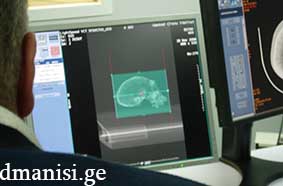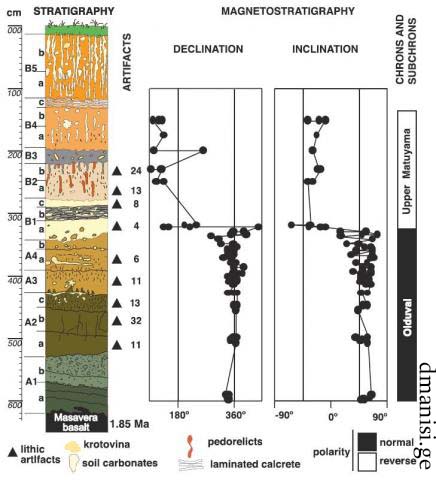Field & Museum
RESEARCH
The goal of our research is to produce new knowledge about the human past.

Archaeological research involves the interpretation of the finds recovered during excavation. These data are used to test and refine hypotheses regarding site formation, past environments, and human activities at Dmanisi.
One of the most important steps of the research at Dmanisi is to define the stratigraphy of the site. Stratigraphy, including lithostratigraphy and biostratigrapy, is a branch of geology that studies both the age of the site and changes within the site. Lithostratigraphy is perhaps the most obvious, dealing with layers of sediment, reflecting the changes of environments of deposition, known as facies change. Biostratigraphy is the same as paleontologic stratigraphy, based on the fossil evidence in the rock layers. Another branch of stratigraphy is chronostratigraphy that studies absolute ages of rocks and sediments.
Dating is very important in archaeology, since age is critical in this science. To determine the absolute age of Dmanisi, we used radioisotopic dating as well as paleomagnetic and biostratigraphic dating.

One method for dating sediment is paleomagnetism, which studies the reversals of the earth’s magnetic field over time. The sequence of the reversals is well established and can be used to help date new sites. Ferrous elements within igneous rocks as well as sediment take on the earth’s polarity when they are deposited. At Dmanisi, for example, the sediments show a change from normal to reversed polarity which is dated to ca. 1.78 million years ago.
In addition to determining the age and geology of the site, the research team is working on a broad range of data related to the site history. Palynologists and paleobotanists are investigating plant fossils and ancient vegetation to help gain an insight into the ancient ecological setting of the site. Paleoanthropologists and paleontologists are researching the morphological similarities and differences between the Dmanisi fossils and other species described at other localities. Taphonomists are investigating evidence for hominin modification on the fossils recovered. These combined efforts are shedding new light on the behavior and ecology of the Dmanisi hominins.
Photograph by Ann Margvelashvili
Stratigraphy from Ferring et al 2011
